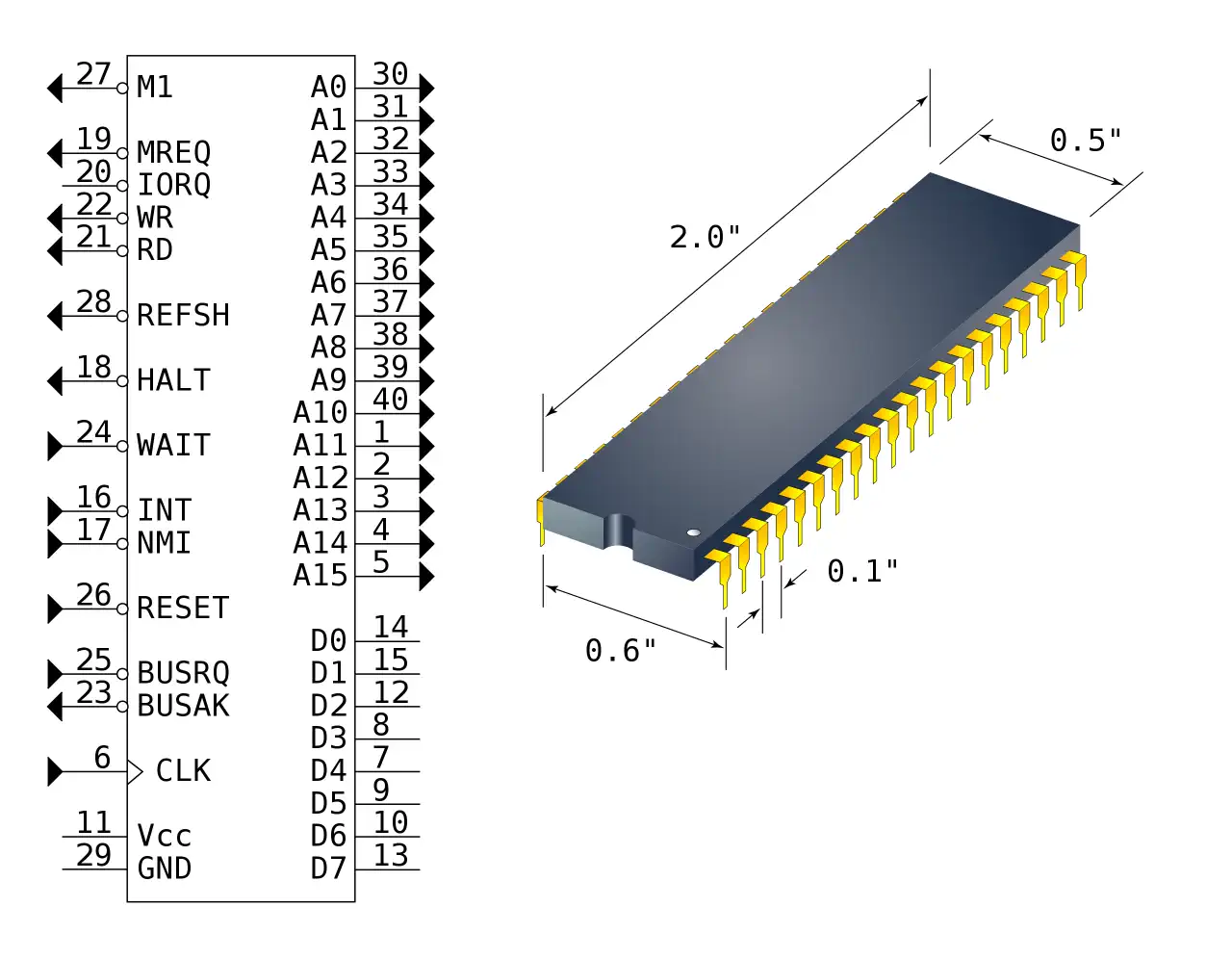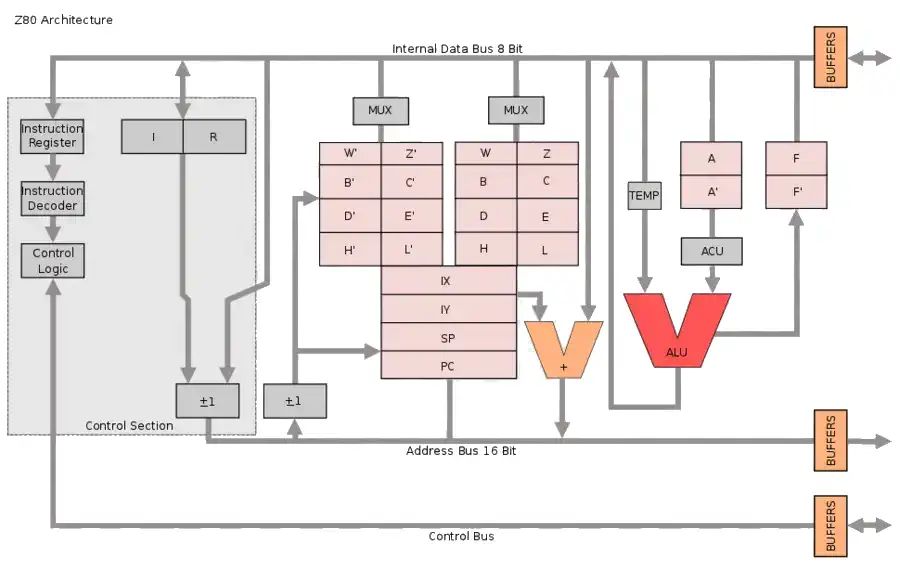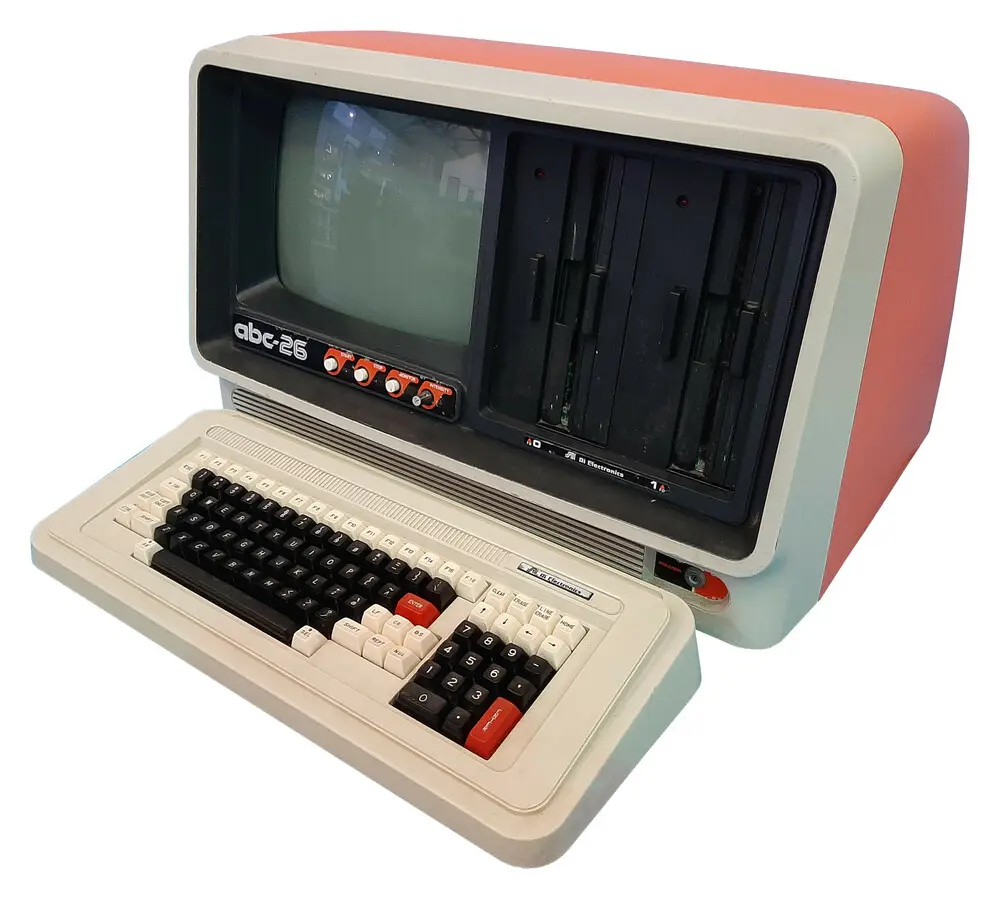ABC 26
The abc-26 originates from Japan, and could run up to 7 workstations, This is a Z80 based M/PM and CP/m machine, with 64K of RAM, expandable to 1MB and very advanced word processing capabilities.
There were several models in the 2X series, serving as successors of the abc-10 which had a digital tape auxilliary memory, supplied with DOSKET-T
Ai DOSKET is the Ai Electronics operating system, a lot of different languages and operating systems were available for the machines, such as M-BASIC, C-BASIC, PASCAL, COBOL80, PL/3, FORTRAN IV and Assembler.
The main unit houses a green screen monitor, with 80x24 character size, and has twin 8 inch floppy drives with 1.15x2MB memory storage capacity, the separate keyboard has 16 user programmable keys.
As with many machines of the period, it is a single board system, with processor, arithmetic co-processor, LSi slots and a good range of interface ports, including RS-232. It could also be connected to external Winchester HD Drives of 10 or 20 Mb.
Zilog Z80 CPU Family
The Z80 quickly became popular in the personal computer market, with many early personal computers, such as the TRS-80 and Sinclair ZX80, using the Z80 as their central processing unit (CPU). It was also widely used in home computers, such as the MSX range, SORD, and the Amstrad CPC, as well as in many arcade games. Additionally, it was also used in other applications such as industrial control systems, and embedded systems. The Z80 was widely used until the mid-1980s, when it was gradually replaced by newer microprocessors such as the Intel 80286 and the Motorola 68000.
The Z80 microprocessor was developed by Zilog, a company founded by Federico Faggin in 1974. The Z80 was released in July 1976, as a successor to the Intel 8080. It was designed to be fully compatible with the 8080, but also included new features such as an improved instruction set, more powerful interrupts, and a more sophisticated memory management system.
The Z80 quickly became popular in the personal computer market, with many early personal computers, such as the TRS-80 and Sinclair ZX80, using the Z80 as their central processing unit (CPU). It was also widely used in home computers, such as the MSX range, SORD, and the Amstrad CPC, as well as in many arcade games. Additionally, it was also used in other applications such as industrial control systems, and embedded systems. The Z80 was widely used until the mid-1980s, when it was gradually replaced by newer microprocessors such as the Intel 80286 and the Motorola 68000. The design was licensed to Synertek and Mostek as well as the European SGS.
The Z80s instruction set is binary compatible with the Intel 8080, so that 8080 code such as the CP/M Operating System and Intel's PL/M compiler for the 8080 can run unmodified on the Z80. The Z80 had many enhancements over the 8080 such as 16-bit data movement instructions, block copy and block I/O instructions, single bit addressing of all registers, IX/IY offset registers, better interrupt system and a complete duplicate register file for context switching during an interrupt.
Source: WikiPedia

MP/M
CP/M Storage Two 8" Floppy Disk Drives

